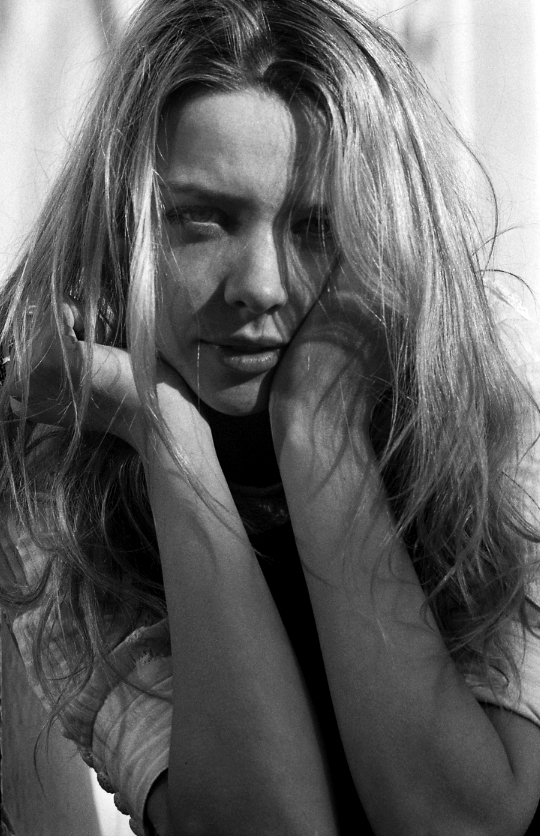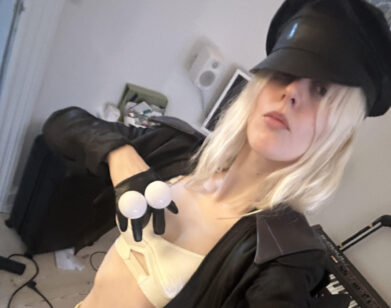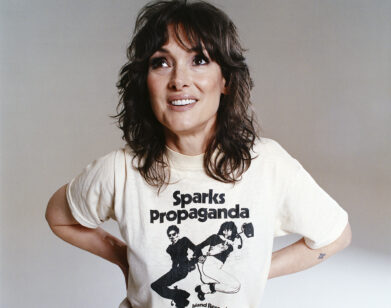Greta Bellamacina’s Modern Poetry

ABOVE: GRETA BELLAMACINA
“As a child, I spent a lot of time thinking about the ground, the sky, the sound of a voice or the way we make eye contact. I always felt an unsettling pressure to capture the meanings of those things,” muses poet Greta Bellamacina. Based in London, the 25-year-old is garnering critical acclaim for her way with words and her ability to translate the classic poetic form into the contemporary creative landscape. Among her preferred mediums is a fusion between poetry, fashion, and film. In 2012, Bellamacina collaborated with director Jacob Perlmutter on a black-and-white short titled “A Love Poem to San Francisco.” Shot in the Californian city, the short references the iconic opening scene of Woody Allen’s Manhattan and caught the attention of luxury fashion brands such as Vivienne Westwood and Prabal Gurung. With numerous short films, documentaries, books, and poetry readings to her name, Bellamacina‘s most recent endeavour is a short book of poems, Points for Time in the Sky (New River Press), created with text-based artist and poet Robert Montgomery.
The conversation below took place in a café in Soho London. Bellamacina talks freely of her early influences, messages of home, and the endless possibilities with poetry.
DAVINA CATT: You have mentioned Shelley, Keats, and later the Beat Generation as influences. In the past, poetry was clearly defined by movements, how do you see it differently today?
GRETA BELLAMACINA: I think more people are able to interact with poetry through differing mediums today. There is a large community of writers, poets, and musicians who are a part of the self-publishing generation on the Internet. I think this has made the whole process a lot more democratic and productive.
CATT: How would you describe your own poetry voice—how has it been influenced by the classics or any poems in particular?
BELLAMACINA: I think growing up I read a lot of poets like Anne Sexton, Rimbaud, Ted Hughes—they all made me want to understand them. I felt close to their unleashed silences and noiseless despairs. But now I think I am more influenced by poets who have a way of looking at landscape as a continuous home; poets like Octavio Paz and Alice Oswald looking at land as part of a greater system, something more cohesive with our dreams, part of the weather and the trees. And as poets who have an acceptance of past and present—the human living hells that detract human living heavens that make up the landscape. I like to explore these themes a lot in my writing.
CATT: You are largely known for these poetry-meets-fashion film shorts you make, fusing poetry with other mediums.
BELLAMACINA: It challenges all the traditional forms of film, fashion, [and] poetry. I like that challenge. Creatively, I think the main challenge when putting these together is to be as visually connected to the narrative as possible. But essentially I think art creates culture whether it is poetry, fashion, or music or all of them combined. It can educate and influence people from places far away and that is invaluable regardless. Vivienne Westwood often refers to Matthew Arnold’s view on culture and art: creating one’s “best self.” So with this in mind, I think there are endless possibilities and poetry-meets-fashion film is just one.
CATT: Your new book of poems is called Points for Time in the Sky. What’s the significance of the title and the meaning behind it?
BELLAMACINA: Robert actually came up with the title after returning back from somewhere. I can’t remember where exactly. I think it is almost a celebration of flying: the revolution of flight, the unruly magic of it all, and its connection to all land.
CATT: Robert has been using art as a visual language by which to display his words and poetry and has quite a political voice. How was the process of writing together and merging your distinct styles?
BELLAMACINA: I was reading Anne Carson’s Autobiography of Red last week and she described language in a way, which I think might describe when we write together. Robert likes to define the point–the way nouns name the world and verbs activate the names, but adjectives come from somewhere else. The word adjective is itself an adjective meaning “placed on top,” “imported,” “foreign.” Adjectives seem fairly innocent additions, but these small imported mechanisms are in charge of attaching everything in the world to its place in particularity and that is where I feel I come in. Together, the two are the latches to being.
CATT: I like the stanzas dedicated to different places—Hay, London, New York. For you, does a sense of place initiate new feeling in your poetry?
BELLAMACINA: Yes I think it does, but interestingly I always seem to find myself drawing the place and messages of home.
CATT: What is your favorite extract from the book?
BELLAMACINA: I like the poetry about mundane childhoods, leftover childhoods. It’s funny, but sad simultaneously:
the jug of iced tea
These are our narrow canettes
in paddling pools of children
I like how your hip bones are high up
Shinier shadows of newspaper pages on themselves
Than the whole paper makes on the ground
In the sun in the park at 2
Left over
Just gulps of May sun above you
And that’s what the shadows are there to tell you
Like the jam in the fridge
Your aunt sticks the handwritten labels on
And brings round at Easter
And how the kids don’t eat that
Giving you Tuesdays which no one ever gets
Cos everyones Tuesdays are taken
For a reason we don’t know
Frogs stay in the garden at summer
In sleeping bags under your sheds
Your cousins wake up from Glastonbury
2 weeks late
CATT: For you, what do you see as the future of poetry?
BELLAMACINA: Existing in a variety of emerging forms: visual, written, and spoken.
POINTS FOR TIME IN THE SKY WILL BE RELEASED IN JANUARY. GRETA BELLAMACINA IS REPRESENTED BY VIVA MANAGEMENT.






